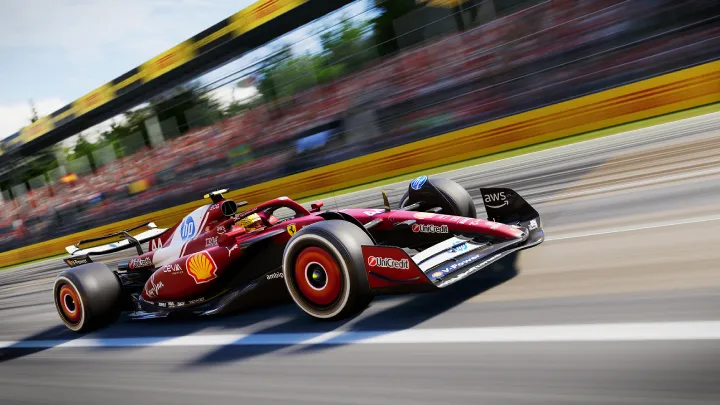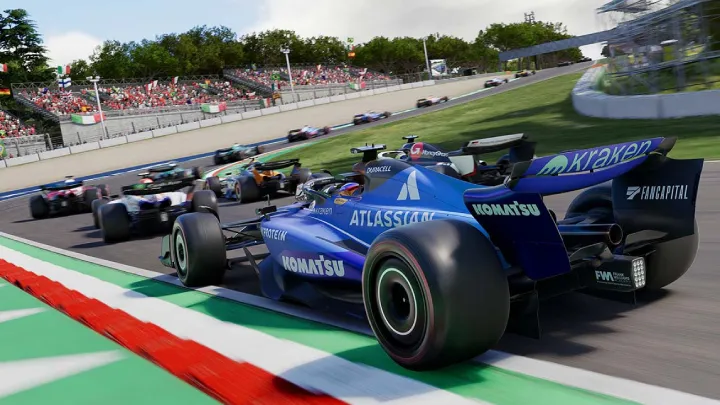F1 25 is the latest installment in the Formula 1 racing game series developed by Codemasters and published by EA Sports. With stunning graphics, enhanced physics, and a revamped career mode, F1 25 brings players closer than ever to the thrill of Formula 1 racing. Whether you're new to the series or a returning veteran, mastering this game requires more than just fast reflexes. You’ll need strategy, precision, and a deep understanding of game mechanics. This guide walks you through how to get the most out of F1 25, from your first lap to becoming a championship-winning driver.
Getting Started with F1 25
Before diving into the high-speed action, it's important to understand the basics of F1 25. This includes setting up your game, choosing your difficulty level, and understanding the game modes.
Understanding the Game Modes
F1 25 offers several game modes, including Career, My Team, Multiplayer, Time Trial, and Grand Prix.
- Career Mode allows you to join an existing team or create your own journey through multiple seasons.
- My Team adds a management aspect where you build your own F1 team from the ground up.
- Multiplayer lets you race against others online in ranked or casual lobbies.
Adjusting Game Settings
When starting out, it’s crucial to configure the game to match your skill level. Use assists like traction control, braking assist, and racing lines if you’re a beginner. As you improve, gradually reduce assists to gain more control and speed.
Setting Up Your Controls and Camera

The right control setup can significantly impact your performance in F1 25, whether you're using a gamepad, wheel, or keyboard.
Gamepad vs Wheel
- Gamepad: More accessible and suitable for casual players. Adjust sensitivity for steering and throttle to avoid oversteering.
- Racing Wheel: Provides a more immersive experience. Make sure to calibrate the force feedback and button mappings for efficiency.
Choosing the Right Camera Angle
There are multiple camera views in F1 25:
- Cockpit View: Most immersive but requires skill.
- TV Pod View: Most popular, offering good balance and visibility.
- Chase View: Helpful for beginners to understand car positioning.
Pick the one that makes you feel most comfortable, and test each during practice sessions.
Learning the Tracks
Each F1 track is unique with its own challenges. Knowing the layout of each circuit is essential for success.
Track Familiarization
Start with time trials to learn the layout of the tracks. Pay close attention to braking zones, cornering speeds, and overtaking spots. Use the racing line as a guide but don’t rely on it forever.
Best Tracks for Beginners
If you're just getting started, try tracks that are beginner-friendly:
- Austria (Red Bull Ring): Wide track and forgiving corners
- Bahrain: Good mix of straights and corners
- Monza: High speed and minimal technical sections
Learn one track at a time to avoid becoming overwhelmed.
Understanding Car Setup and Tuning
Customizing your car setup can drastically improve your performance, especially in different weather or track conditions.
Basic Car Settings
There are several components to focus on:
- Aerodynamics: High downforce for twisty tracks, low for high-speed circuits.
- Suspension: Softer for better handling, harder for responsiveness.
- Tires and Brakes: Adjust based on wear rate and track temperature.
Presets vs Manual Tuning
F1 25 offers setup presets, but manual tuning gives you more control. Once you're comfortable, start tweaking settings yourself. Use practice sessions to test different setups and see what works best for you.
Mastering Qualifying Sessions
Qualifying is crucial in F1 25. A good starting position can make the difference between winning and losing.
Types of Qualifying
F1 25 includes different qualifying formats:
- One-shot qualifying
- Short qualifying
- Full qualifying
Choose one that suits your time commitment and gameplay style.
Tips to Qualify Better
- Use fresh soft tires
- Go out early to avoid traffic
- Watch the weather forecast and get a lap in before rain starts
Save your best lap for the end of the session when the track is usually at its fastest.
Racing Strategy and Tire Management

Winning races isn’t just about speed; it’s also about strategy and consistency.
Pit Stop Strategy
Choose your tire strategy wisely. The game provides suggestions based on race length and weather. You can override them based on your driving style and tire wear.
- One-stop: Safe and efficient
- Two-stop: Better for aggressive drivers with tire wear issues
Tire and Fuel Management
Conserve tires by avoiding sliding and harsh braking. Use lift-and-coast techniques to save fuel during long races. Managing your resources can help you attack when it counts.
Navigating Career and My Team Mode
Career and My Team are the heart of F1 25, allowing you to build a legacy.
Career Mode
Join an F1 team and rise through the ranks. Focus on meeting team objectives and consistently scoring points to upgrade your car.
My Team Mode
Build your own team:
- Choose sponsors
- Sign a second driver
- Develop your car through R&D
Invest in facilities to improve team performance and staff efficiency. Balance your finances wisely between upgrades and development.
Practicing Racecraft and Overtaking
Raw speed isn’t enough. You need to know how to race wheel-to-wheel and make clean overtakes.
Key Overtaking Zones
Learn where DRS zones and heavy braking points are. These are ideal for passing.
Defensive Driving
Block overtakes by positioning your car well without weaving or causing collisions. Learn to break the slipstream and maintain racing lines.
Practice overtaking in Time Trial ghost races or online races to improve confidence and control.
Using ERS and DRS Effectively
Energy management is essential for racing strategy in F1 25.
What is ERS?
ERS (Energy Recovery System) gives you extra power when needed. Manage it wisely:
- Use Medium or Overtake mode on straights
- Recharge during corners or when in traffic
DRS (Drag Reduction System)
DRS opens a flap on your rear wing to reduce drag. It can only be used:
- In designated zones
- When within 1 second of the car ahead
Mastering ERS and DRS usage can be the difference between overtaking and getting stuck.
Improving Through Practice and Analysis
Even the best racers always look for ways to improve. Use the tools available in F1 25 to review and learn.
Use Flashbacks and Replays
Flashbacks allow you to retry sections of a race. Use them to learn from mistakes, not just to fix errors.
Analyze Telemetry
Advanced players can use telemetry to understand throttle input, braking patterns, and tire wear. Compare your laps to the AI or ghosts to see where you’re losing time.
Make use of training programs in practice sessions to earn points and refine your racing skills.
Conclusion
F1 25 offers a deep, challenging, and rewarding racing experience for players of all skill levels. From understanding basic controls to fine-tuning car setups, mastering race strategy, and diving into Career and My Team modes, there’s always something new to learn. With the tips and techniques in this guide, you’ll be well on your way to becoming a competitive and confident F1 driver. Consistent practice, analysis, and a love for the sport will keep you improving with every race.
Summary:
Master F1 25 with tips on setup, strategy, and racecraft. From rookie to pro, dominate every track and mode with this ultimate how-to guide.

















